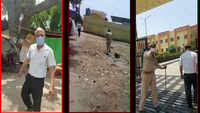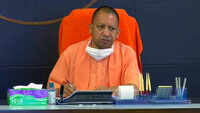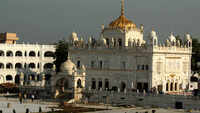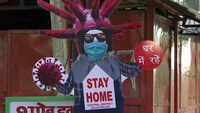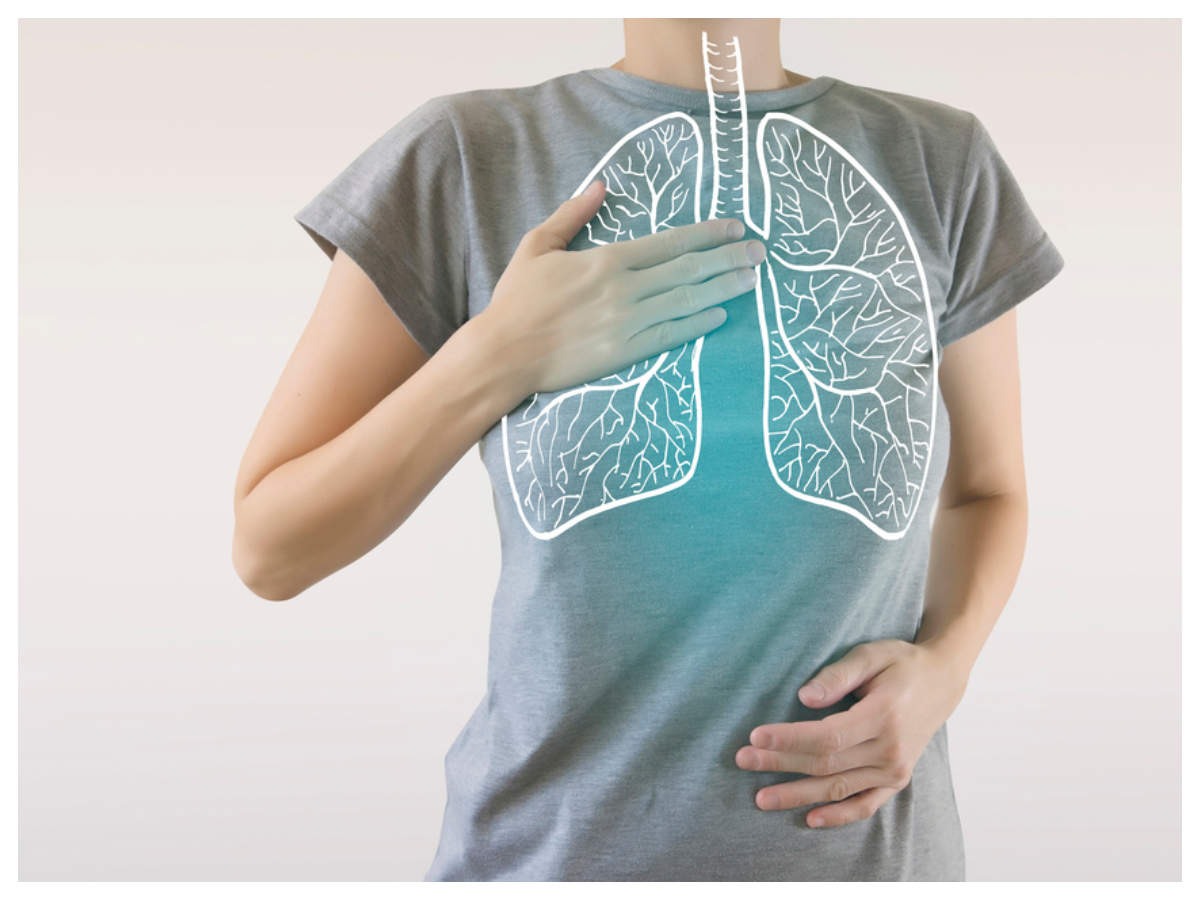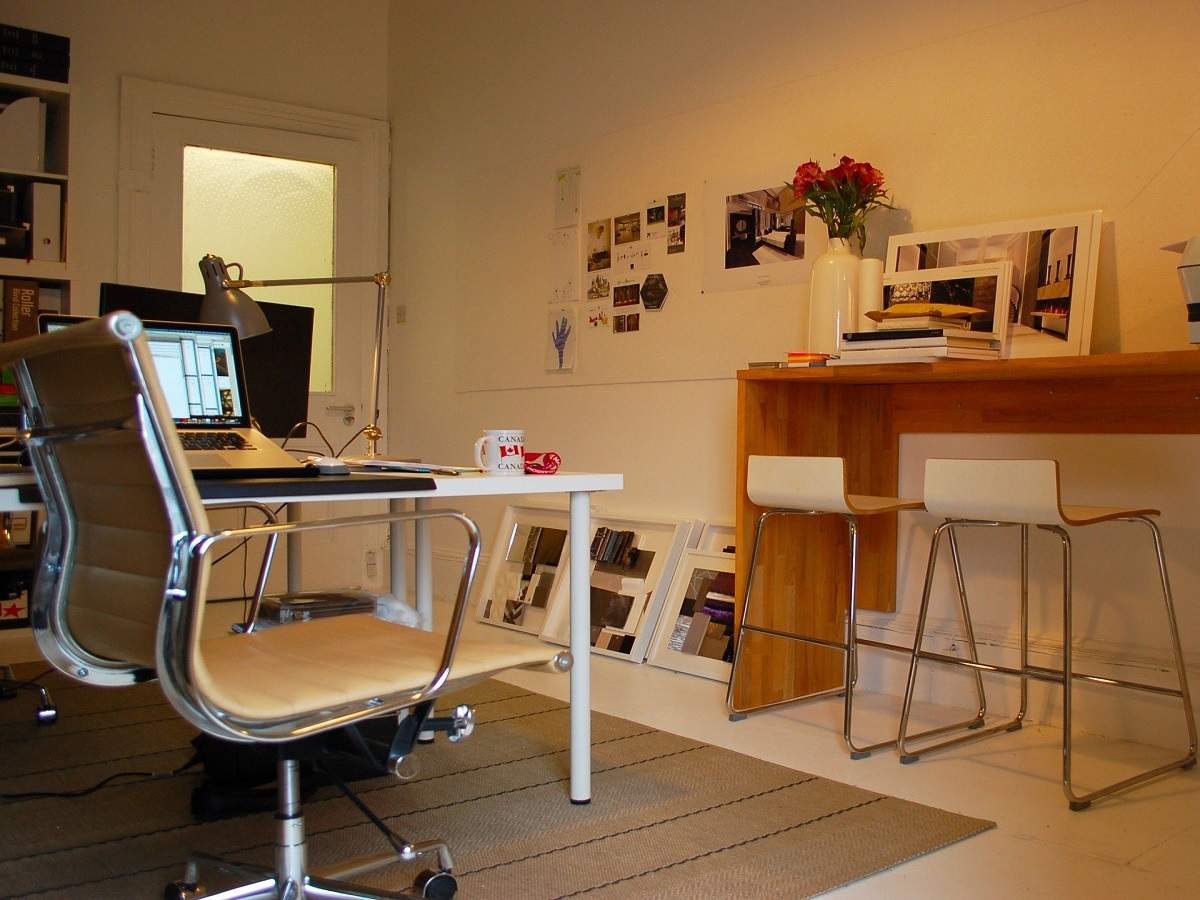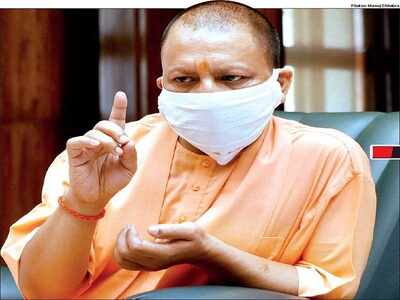
He is on the job almost 20 hours a day, holding meetings and giving instructions to his ministers and officials to carry forward the ongoing battle against coronavirus. UP CM Yogi Adityanath, however, spared time from his busy schedule to share his plans to tackle the crisis with TOI’s Pravin Kumar. He talks about how dealing with challenges is a habit now, but watching lakhs of workers marching towards UP was both emotional and stressful for him
After a month and a half of lockdown and nearly 2,150 cases, what is your assessment of UP’s performance? Are we past the peak or are we still approaching it?
Right now, we have 1,600 active cases and after one-and-a-half months of social distancing and lockdown, we can say we are safe. But the corona chain must be broken at every level.
We started acting to tackle corona in early March when the first case was reported. When the PM sent out an alert to stop all Holi milan functions, we issued instructions that no Holi celebration should be held. Even I didn’t take part in any. I held meetings on March 11 and 13. First of all, educational institutions were shut and then cinemas, malls, multiplexes and markets.
So, on March 22, when PM announced janata curfew, 16-17 districts of UP were already in lockdown. Others followed after March 25.
It was an unprecedented occasion and needed unprecedented steps. Especially in a state like UP with such a large and dense population. Secondly, we had to work out a plan to protect the section which was going to be hit the hardest—the daily-wager of all kinds.
For this, we formed a group of ministers to plan to ensure that adverse impact of lockdown didn’t hit this section. Under Modiji’s direction, ministers were asked to make policy and a group of officers were asked to execute them. UP was the first state to announce Rs 1,000 ex gratia to all kinds of daily-wage workers.
Now, I can vouch for the fact that all my teams have come out with exceptional performance. It is the result of their team work that UP finds itself in a ‘safe’ state.
But the challenge in the third phase is reopening and handling a large influx of migrants.
You expect 10 lakh migrants in this phase. What are your plans for them? Do you think they will stay or go back when things normalise?
This is an opportunity for us. I have discussed with my ministers and officers. We assume that the workers who are coming back have skill in different works. We can use their skill in UP. I have formed committees both at cabinet and officer levels to work on this.
Is creating 15 lakh jobs as announced by you a realistic target?
We have 90 lakh MSME units and barring hotspots, most are either running or will start running phase-wise. A large number of skilled labourers would be absorbed in this sector and in ODOP. Then, there is a huge NGO sector, which would be another employer of skilled and nonskilled migrant labourers. We have already created 8 lakh MNREGS jobs. So, 15 lakh jobs won’t be a problem. From supplying raw material to delivery of end product, this workforce would be easily accommodated. Our target is to provide 15 lakh jobs to these migrants. We are in a position to do it. Till the time they get employment, we have arranged for their food.
We have already provided foodgrain to 18 crore people in two rounds. Another round is going to start tomorrow. A large part of it is free. Those who have ration card are getting it straight away. Those who don’t are being issued cards and then we have a kit of foodgrain and other essentials ready to be given till ration cards are prepared.
Will all these people be screened and tested before being let in. Do we have enough test kits for sampling several lakh people?
While bringing them back, we have to ensure that they don’t bring infection. So, those who will show no symptoms would be sent to 14-day home quarantine and those who are found suspect would be kept in quarantine facilities. Only positive cases would be sent to Covid hospitals. We have kept 52,000 beds ready in all three categories—L1, L2 and L3.
It’s a tougher phase, but our team work will tackle this. We are already ready with 7 lakh quarantine beds and would increase it to 10 lakh in two days.
There has already been some relaxation in the green zone. But what about red and orange zones after May 3? UP’s major industrial and commercial centres like Noida and Ghaziabad are in red zone. Does the state have a strategy to open the red zones?
We don’t want to take any risk. We are working on an extensive plan on red and orange zones. The first task is to properly define them. We will give phase-wise relaxation to industries and shops in green zone with proper directions to follow social distancing. As for orange and red, we are working on a detailed plan. Breaking of corona chain is must to reduce deaths and for this, lockdown and social distancing have to be be followed. We can’t fritter away the gains we have made during the one-anda-half months of lockdown.
The 28-day sealing protocol for hotspots in Noida has led to worries among residents that they will remain caught in an endless cycle of sealing, if even one positive case leads to a whole housing society being locked up for 28 days. Are you reviewing the 28-day protocol?
We are fighting this battle with people’s support and I am thankful to people of UP that under the guidance of PM Modi, they have shown remarkable restraint in following lockdown. It is a big challenge to protect 135 crore people in such an outbreak. With PM Modi’s far-sightedness, we have been able to manage this. Otherwise, see the condition of US. There are already 60,000 deaths. Western Europe is equally bad. Despite their development claims and low population, they are reporting many cases and deaths. India is in a sound position because of lockdown and social distancing. And we need to move forward by observing this discipline. Economic development and employment opportunities would follow.
What is the strategy for hotspots going to be? Will it shift from sealing to testing and screening?
Of course testing and screening is the way forward. When the crisis started, we had just one lab with capacity to test 50 samples per day. Within a month and a half, we have 17 labs performing approximately 5,000 tests per day. We were the first to introduce pool testing to increase the number.
What has been your toughest moment in this fight so far? And what has made you most emotional?
Tackling challenges is our habit now. So, there is no difficulty as such. This is also because we work under the guidance of the PM who keeps guiding us through VC and telephone. But there are occasions of emotional stress. When suddenly over 4 lakh migrants from UP defied lockdown and started on foot from Delhi on March 28 and 29, it was one such moment. The arrangement for their safe travel to their destination was a big challenge. But by god’s grace, we managed to do it. Today, Noida is safe and UP is safe.
Despite your announcement to bring people from other states, there are a lot many who are still walking.
I have appealed again today. I had appointed nodal officers for each state to monitor the condition of migrant labourers. They are constantly working to resolve their issue. Now, we have also arranged their phase-wise repatriation. This is a big challenge as we have to ensure that those who are coming don’t bring any kind of infection with them. We are confident that we will be successful.
How long is this battle going to last for? Is the state looking at a long-term strategy to tackle the pandemic—apart from opening of industries, is there a timeline for ‘normal’ life to start?
We have to break the corona chain at all levels. For this, we must find the reasons and sources of infection. If we manage to do that, we would be successful. In our case, the first source was people coming from abroad. They affected a large section. Then Tablighi Jamaat was a big challenge. They not only ignored this disease but would also make statements debunking the safety measures being taken. When they were quarantined and tested, many were found positive. Medical infection is another challenge. Three private hospitals are major sources of infection in Agra.
The Agra model received a lot of praise in the beginning. But now cases rising.
Things were totally under control in Agra. But because of these three hospitals, the condition there has turned critical. That’s why we made it clear that only those hospitals should run emergency services which follow the Covid protocol. General OPD is still not operational. We have advised hospital to use telemedicine to run their general OPDs. We have started this service in each district. Hospitals in all districts have been given essential things like PPE kits and masks to run emergency services. After stopping medical infection, we would be able to move forward.
What is the dip in SGDP and manufacturing sector that the state is looking at on the other side of the lockdown?
We are thankful to PM Modi whose farsightedness has saved India from disaster. I am again citing US’s example. As compared to the world’s strongest country, India is in a safer condition. All economic activities therefore would happen after following ‘safety first’ principle. We will decide which industry to start first.
There have been reports of poor quality food or no food in some quarantine and holding centres? What is being done for better monitoring?
We are using technology to curb irregularities. We have geo-tagged all community kitchens. We can monitor all 7,000 kitchens from here. Similarly, PDS shops have been linked to e-PoS machines—80,000 of them. Millions of people have received foodgrain without any complaint. Besides, DBT has been used to transfer money to daily-wagers. Everything was done in a total transparent manner.
Some BJP MLAs have hit the headlines for questioning the government and making statements like ‘don’t buy vegetables from Muslims’? Does this add to your problems?
Loktantra mein bayanbazi uljhan paida nahin karti hai (In democracy, such statements don’t cause much problem). They give an opportunity to get alert. But I would suggest everybody to make any statement after proper thought and after understanding the facts.
What action has been taken against them?
The party has served show-cause notices to them. I think one turns oneself into a laughing stock by making statements without knowing the facts.
Your government was going big on infra projects. What will happen to them?
We have started construction work on our expressway projects.
What about their deadline and budget?
There will of course be some impact. We were going at a fast speed. What will happen if a vehicle is running at 120 kmph and brakes are applied? Speed is bound to reduce. So, these projects would speed up gradually.
What is the timeline for Ram Mandir now?
The trust formed for this is working on a detailed plan.
From giving out Rs 1,000 to lakhs of dailywagers to starting pool testing to bringing migrants home, UP is being emulated.
Where do you get these ideas from?
We are fortunate to be guided by the PM and then the Union home minister. Our team of cabinet ministers makes policies, and officers implement them. It’s a team effort.
UP is hyper on lapping up industrial units which might shift out of China in a post-Covid scenario.
We have already started working on change in policy to welcome and accommodate industries from China. Two ministers and several offices are working on war-footing. We hope we get good investment from there.
It was said that in the first phase, you put officers to work and ignored ministers as none of them was part of Team 11?
Ministers were involved in policy making since the beginning. They were using technology to do that. The first goal was to check infection. It is seen that there is crowd wherever politicians go. So, implementing social distancing would have been difficult. But now they are all deeply involved, heading different committees.
After a month and a half of lockdown and nearly 2,150 cases, what is your assessment of UP’s performance? Are we past the peak or are we still approaching it?
Right now, we have 1,600 active cases and after one-and-a-half months of social distancing and lockdown, we can say we are safe. But the corona chain must be broken at every level.
We started acting to tackle corona in early March when the first case was reported. When the PM sent out an alert to stop all Holi milan functions, we issued instructions that no Holi celebration should be held. Even I didn’t take part in any. I held meetings on March 11 and 13. First of all, educational institutions were shut and then cinemas, malls, multiplexes and markets.
So, on March 22, when PM announced janata curfew, 16-17 districts of UP were already in lockdown. Others followed after March 25.
It was an unprecedented occasion and needed unprecedented steps. Especially in a state like UP with such a large and dense population. Secondly, we had to work out a plan to protect the section which was going to be hit the hardest—the daily-wager of all kinds.
For this, we formed a group of ministers to plan to ensure that adverse impact of lockdown didn’t hit this section. Under Modiji’s direction, ministers were asked to make policy and a group of officers were asked to execute them. UP was the first state to announce Rs 1,000 ex gratia to all kinds of daily-wage workers.
Now, I can vouch for the fact that all my teams have come out with exceptional performance. It is the result of their team work that UP finds itself in a ‘safe’ state.
But the challenge in the third phase is reopening and handling a large influx of migrants.
You expect 10 lakh migrants in this phase. What are your plans for them? Do you think they will stay or go back when things normalise?
This is an opportunity for us. I have discussed with my ministers and officers. We assume that the workers who are coming back have skill in different works. We can use their skill in UP. I have formed committees both at cabinet and officer levels to work on this.
Is creating 15 lakh jobs as announced by you a realistic target?
We have 90 lakh MSME units and barring hotspots, most are either running or will start running phase-wise. A large number of skilled labourers would be absorbed in this sector and in ODOP. Then, there is a huge NGO sector, which would be another employer of skilled and nonskilled migrant labourers. We have already created 8 lakh MNREGS jobs. So, 15 lakh jobs won’t be a problem. From supplying raw material to delivery of end product, this workforce would be easily accommodated. Our target is to provide 15 lakh jobs to these migrants. We are in a position to do it. Till the time they get employment, we have arranged for their food.
We have already provided foodgrain to 18 crore people in two rounds. Another round is going to start tomorrow. A large part of it is free. Those who have ration card are getting it straight away. Those who don’t are being issued cards and then we have a kit of foodgrain and other essentials ready to be given till ration cards are prepared.
Will all these people be screened and tested before being let in. Do we have enough test kits for sampling several lakh people?
While bringing them back, we have to ensure that they don’t bring infection. So, those who will show no symptoms would be sent to 14-day home quarantine and those who are found suspect would be kept in quarantine facilities. Only positive cases would be sent to Covid hospitals. We have kept 52,000 beds ready in all three categories—L1, L2 and L3.
It’s a tougher phase, but our team work will tackle this. We are already ready with 7 lakh quarantine beds and would increase it to 10 lakh in two days.
There has already been some relaxation in the green zone. But what about red and orange zones after May 3? UP’s major industrial and commercial centres like Noida and Ghaziabad are in red zone. Does the state have a strategy to open the red zones?
We don’t want to take any risk. We are working on an extensive plan on red and orange zones. The first task is to properly define them. We will give phase-wise relaxation to industries and shops in green zone with proper directions to follow social distancing. As for orange and red, we are working on a detailed plan. Breaking of corona chain is must to reduce deaths and for this, lockdown and social distancing have to be be followed. We can’t fritter away the gains we have made during the one-anda-half months of lockdown.
The 28-day sealing protocol for hotspots in Noida has led to worries among residents that they will remain caught in an endless cycle of sealing, if even one positive case leads to a whole housing society being locked up for 28 days. Are you reviewing the 28-day protocol?
We are fighting this battle with people’s support and I am thankful to people of UP that under the guidance of PM Modi, they have shown remarkable restraint in following lockdown. It is a big challenge to protect 135 crore people in such an outbreak. With PM Modi’s far-sightedness, we have been able to manage this. Otherwise, see the condition of US. There are already 60,000 deaths. Western Europe is equally bad. Despite their development claims and low population, they are reporting many cases and deaths. India is in a sound position because of lockdown and social distancing. And we need to move forward by observing this discipline. Economic development and employment opportunities would follow.
What is the strategy for hotspots going to be? Will it shift from sealing to testing and screening?
Of course testing and screening is the way forward. When the crisis started, we had just one lab with capacity to test 50 samples per day. Within a month and a half, we have 17 labs performing approximately 5,000 tests per day. We were the first to introduce pool testing to increase the number.
What has been your toughest moment in this fight so far? And what has made you most emotional?
Tackling challenges is our habit now. So, there is no difficulty as such. This is also because we work under the guidance of the PM who keeps guiding us through VC and telephone. But there are occasions of emotional stress. When suddenly over 4 lakh migrants from UP defied lockdown and started on foot from Delhi on March 28 and 29, it was one such moment. The arrangement for their safe travel to their destination was a big challenge. But by god’s grace, we managed to do it. Today, Noida is safe and UP is safe.
Despite your announcement to bring people from other states, there are a lot many who are still walking.
I have appealed again today. I had appointed nodal officers for each state to monitor the condition of migrant labourers. They are constantly working to resolve their issue. Now, we have also arranged their phase-wise repatriation. This is a big challenge as we have to ensure that those who are coming don’t bring any kind of infection with them. We are confident that we will be successful.
How long is this battle going to last for? Is the state looking at a long-term strategy to tackle the pandemic—apart from opening of industries, is there a timeline for ‘normal’ life to start?
We have to break the corona chain at all levels. For this, we must find the reasons and sources of infection. If we manage to do that, we would be successful. In our case, the first source was people coming from abroad. They affected a large section. Then Tablighi Jamaat was a big challenge. They not only ignored this disease but would also make statements debunking the safety measures being taken. When they were quarantined and tested, many were found positive. Medical infection is another challenge. Three private hospitals are major sources of infection in Agra.
The Agra model received a lot of praise in the beginning. But now cases rising.
Things were totally under control in Agra. But because of these three hospitals, the condition there has turned critical. That’s why we made it clear that only those hospitals should run emergency services which follow the Covid protocol. General OPD is still not operational. We have advised hospital to use telemedicine to run their general OPDs. We have started this service in each district. Hospitals in all districts have been given essential things like PPE kits and masks to run emergency services. After stopping medical infection, we would be able to move forward.
What is the dip in SGDP and manufacturing sector that the state is looking at on the other side of the lockdown?
We are thankful to PM Modi whose farsightedness has saved India from disaster. I am again citing US’s example. As compared to the world’s strongest country, India is in a safer condition. All economic activities therefore would happen after following ‘safety first’ principle. We will decide which industry to start first.
There have been reports of poor quality food or no food in some quarantine and holding centres? What is being done for better monitoring?
We are using technology to curb irregularities. We have geo-tagged all community kitchens. We can monitor all 7,000 kitchens from here. Similarly, PDS shops have been linked to e-PoS machines—80,000 of them. Millions of people have received foodgrain without any complaint. Besides, DBT has been used to transfer money to daily-wagers. Everything was done in a total transparent manner.
Some BJP MLAs have hit the headlines for questioning the government and making statements like ‘don’t buy vegetables from Muslims’? Does this add to your problems?
Loktantra mein bayanbazi uljhan paida nahin karti hai (In democracy, such statements don’t cause much problem). They give an opportunity to get alert. But I would suggest everybody to make any statement after proper thought and after understanding the facts.
What action has been taken against them?
The party has served show-cause notices to them. I think one turns oneself into a laughing stock by making statements without knowing the facts.
Your government was going big on infra projects. What will happen to them?
We have started construction work on our expressway projects.
What about their deadline and budget?
There will of course be some impact. We were going at a fast speed. What will happen if a vehicle is running at 120 kmph and brakes are applied? Speed is bound to reduce. So, these projects would speed up gradually.
What is the timeline for Ram Mandir now?
The trust formed for this is working on a detailed plan.
From giving out Rs 1,000 to lakhs of dailywagers to starting pool testing to bringing migrants home, UP is being emulated.
Where do you get these ideas from?
We are fortunate to be guided by the PM and then the Union home minister. Our team of cabinet ministers makes policies, and officers implement them. It’s a team effort.
UP is hyper on lapping up industrial units which might shift out of China in a post-Covid scenario.
We have already started working on change in policy to welcome and accommodate industries from China. Two ministers and several offices are working on war-footing. We hope we get good investment from there.
It was said that in the first phase, you put officers to work and ignored ministers as none of them was part of Team 11?
Ministers were involved in policy making since the beginning. They were using technology to do that. The first goal was to check infection. It is seen that there is crowd wherever politicians go. So, implementing social distancing would have been difficult. But now they are all deeply involved, heading different committees.

Coronavirus outbreak
Trending Topics
LATEST VIDEOS
More from TOI
Navbharat Times
Featured Today in Travel
Quick Links
Kerala Coronavirus Helpline NumberHaryana Coronavirus Helpline NumberUP Coronavirus Helpline NumberBareilly NewsBhopal NewsCoronavirus in DelhiCoronavirus in HyderabadCoronavirus in IndiaCoronavirus symptomsCoronavirusRajasthan Coronavirus Helpline NumberAditya ThackerayShiv SenaFire in MumbaiAP Coronavirus Helpline NumberArvind KejriwalJammu Kashmir Coronavirus Helpline NumberSrinagar encounter
Get the app
